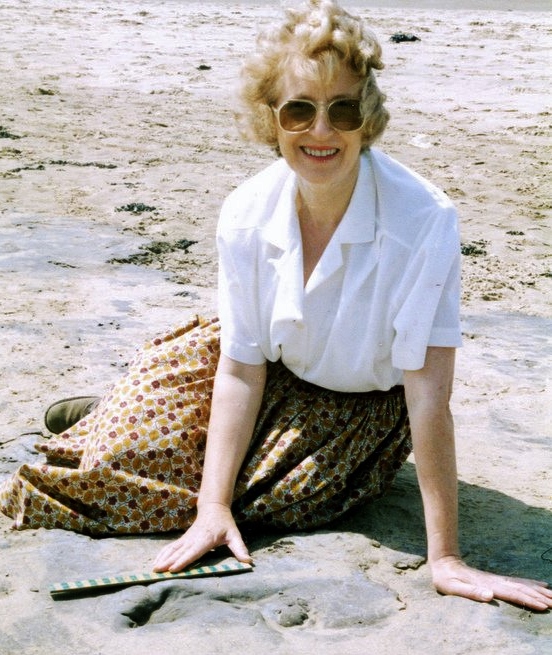|
|
It is with much sadness that my sister and I announce the death of our dear father, Gordon Roberts, at home on 23 August 2016. His intellect, kindness and wealth of knowledge will be missed by many. His love as a father will be missed by us. We hope readers will continue to visit Formby Point and think of him as you carry out your own research. Liz and Helena ------------------
Welcome to my Web Site devoted to the ‘Formby Footprints’, which I have
been researching since 1989.
What are the Formby Footprints? From about 1950 onwards, local
people had sometimes noticed what looked like cattle hoofprints in patches of firm mud which appeared occasionally along the
foreshore of Formby Point.
What is their origin? About 7500 years ago a series of sand bars or barrier islands developed along the coast off Formby Point, resulting in the formation of an intertidal lagoon between them and the shore. For 3000 years, animals, birds and people left their tracks along the muddy shoreline. Some were baked hard by the sun, each tide covering them with a thin layer of sand and silt. Then about 4500 years ago the shoreline moved westwards, sealing in everything. But now coastal erosion is uncovering our prehistoric landscape and revealing those ancient imprints.  And how did I become involved? I had first heard of these mysterious
cattle hoofprints in 1985, but I could never find them on my occasional visits to the beach. Then, in 1988, along came
Kim, a bedraggled puppy found on the streets of Liverpool. Dog-walking now took me along the Point almost every day;
in March 1989 I finally saw these prints for myself. Although local people, museums and universities knew of these animal footprints, it seemed they knew little about them. But the prints were ephemeral - as each tide exposed them, the next could destroy them, unrecorded! Then, human trails and bird tracks also started to appear but no formal academic investigation seemed likely in the near future, so the only solution would be to undertake my own research. As a result, over twenty-five years of identifying, recording, photographing and analysing print sites, I have now built up a detailed reference archive of intertidal-zone Mesolithic-Neolithic (Middle to New / Late Stone Age) footprint data. All this would not
have been possible without the understanding, patience and support of my beautiful, treasured wife, Patricia. Sadly,
after a long, devastating struggle against Alzheimer's Disease, she passed away in February 2014. We had been married
for just over fifty years. I dedicate this website to her memory. A
brief account of my twenty-five years’ research was published in 2014 in a booklet: ‘The Lost World of Formby
Point: Footprints on the Prehistoric Landscape, 5000 BC to 100 BC’, Gordon Roberts, ISBN 978-0-9508155-2-7, published
by The Alt Press for the Formby Civic Society. Copies may be obtained by emailing the Society at: chairman@formbycivicsociety.org.uk, subject: Formby Footprints Booklet. The cost is £3 plus £1.50 postage and packing (UK). My hope is that the booklet will alert Formby Point’s visitors to the prehistoric landscape beneath their feet
and encourage them to carry out further research of their own. Gordon Roberts Acknowledgements
It is extremely difficult for me to acknowledge by name every one of those who have given me their friendly encouragement and practical support since 1989. However, I would particularly like to thank:
|
Formby Footprints
